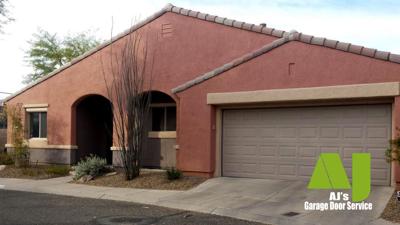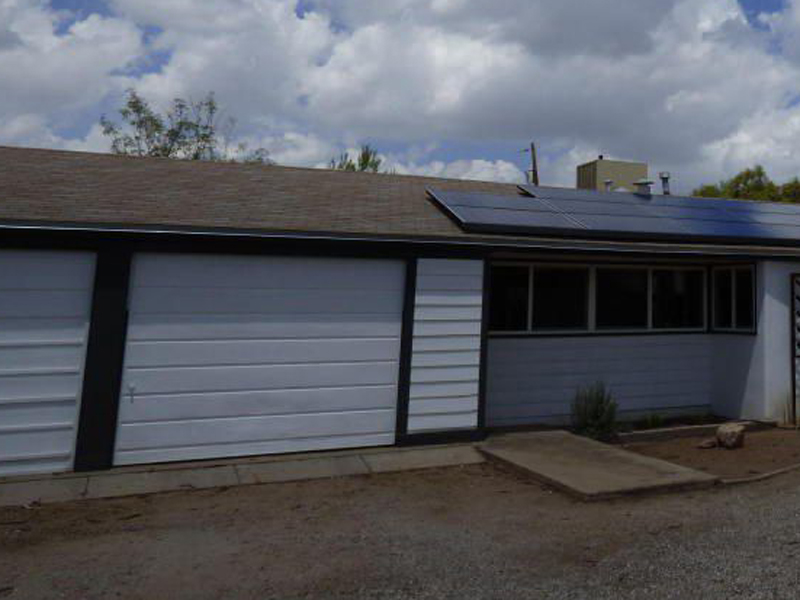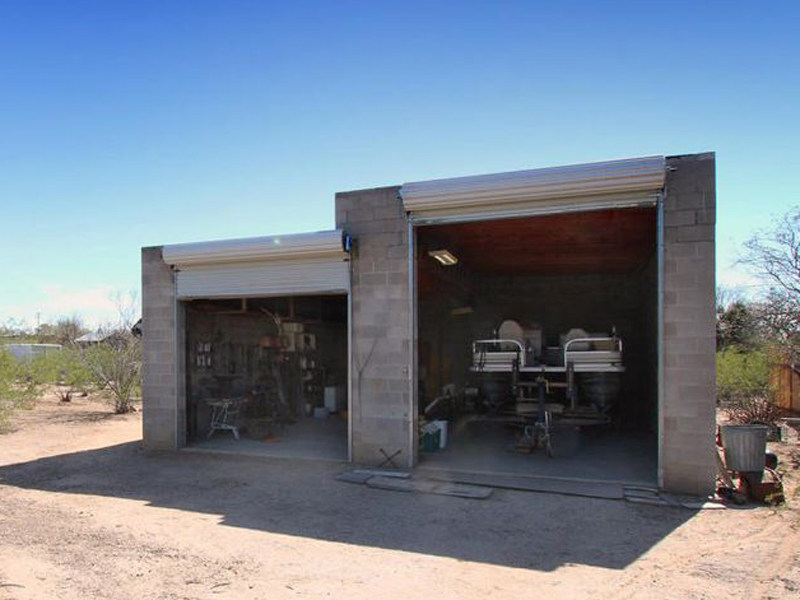Why Won't My Garage Door Open - DIY Repair Service Solutions
Is Your Garage Door Stuck? Below's What to Do Very first
When your garage door will not open, begin with these vital security checks prior to trying any type of repair services. First, guarantee nobody is standing near the door and that vehicles are free from the opening. Try to find evident signs of damages like damaged panels, bent tracks, or hanging cables. If you see a snapped spring or drastically harmed parts, quit instantly and call a professional—-- these repairs require specific tools and experience to handle safely.

Inspect These 6 Things Before Calling an Expert
Prior to assuming you require expensive repairs, run through this quick analysis list that addresses most garage door problems:
-
Power source: Confirm the opener is connected in and the outlet is working
-
Remote batteries: Replace dead batteries in your push-button control
-
Manual lock: Check if someone unintentionally engaged the hand-operated lock
-
Obstructions: Look for particles obstructing the door's course or sensing units
-
Emergency launch: Guarantee the red emergency cable hasn't been drawn
-
Circuit breaker: Validate the garage circuit hasn't stumbled
These straightforward checks solve roughly 70% of garage door concerns without needing professional intervention.
10 Common Reasons Your Garage Door Won't Open
Recognizing why your garage door opener isn't functioning helps you select the right service. Right here are one of the most regular reasons homeowners experience:
Dead remote batteries stand for the simplest solution—-- when batteries pass away, the remote can not send signals to the opener. Power failures or stumbled breakers reduced power to the electric motor. Damaged springs prevent the door from raising properly and need immediate expert attention. Sensor imbalance reasons security systems to obstruct door procedure. Track blockages quit rollers from relocating efficiently. Motor overload triggers automated shutoffs when the opener finds resistance. Limitation button problems puzzle the opener regarding door setting. Cord damages interrupts the lifting device. Weather-related issues impact door motion throughout extreme temperature levels. Component wear from age gradually reduces system performance.
Problem # 1: Dead Push-button Control Batteries
When your wall surface button works however your remote doesn't, dead batteries are generally the offender. A lot of garage door remotes utilize either 3-volt lithium or 12-volt alkaline batteries. Eliminate the back cover of your remote and examine the battery kind. Change with fresh batteries and evaluate the remote. If it still doesn't work, you might need to reprogram it to your opener. Consult your opener's guidebook for details reprogramming guidelines, as the process varies by supplier.
Problem # 2: Power Supply Issues
Garage door power troubles often originate from loosened links or tripped circuits. Inspect that the opener is securely linked into its outlet—-- vibration can loosen connections gradually. Check the outlet with another tool to confirm it's functioning. Examine your home's breaker box for tripped circuits, especially if you've experienced storms or power changes. GFCI electrical outlets may have stumbled and require resetting. If the opener has power yet will not react, the issue likely lies somewhere else in the system.
Problem # 3: Broken or Damaged Springs
Damaged garage door springs are amongst the most hazardous elements to manage. If you listen to a loud bang from your garage or discover the door really feels exceptionally heavy when attempting to lift by hand, a spring has likely snapped. Torsion springtimes run flat above the door, while expansion springs rest on either side. Never ever attempt springtime fixings yourself—-- these elements save incredible stress that can cause major injury or death. Expert replacement generally costs $150-$300 yet ensures your security.
Issue # 4: Obstructed Safety Sensing Units
Modern garage doors feature safety sensors that avoid closure when things are detected. These sensing units can quit the door from opening up if they're filthy, misaligned, or blocked by particles. Tidy sensor lenses with a soft towel and make sure absolutely nothing obstructs the invisible light beam in between them. Check that sensors are effectively straightened—-- most have indicator lights that reveal connection condition. Sensor issues usually fix with basic cleansing and modification.
Trouble # 5: Track Obstructions or Damages
Garage door tracks guide rollers as the door goes up and down. Dust, debris, old oil, or small things can jam the system. Examine tracks aesthetically and remove any kind of blockages with a brush or fabric. Seek dents, bends, or bending that might impede smooth operation. Small track modifications are possible for convenient homeowners, yet significant damages requires specialist repair work to prevent more troubles or safety dangers.
Problem # 6: Garage Door Opener Motor Issues
When the garage door motor runs yet the door doesn't move, several problems could be responsible. The motor might be strained and turning off as a safety measure. Gear wear, specifically in older devices, can stop proper procedure. Chain or belt drive troubles impact power transmission. If you listen to unusual grinding, clicking, or humming audios, quit making use of the opener promptly. Electric motor fixings typically set you back more than substitute, especially for systems over 10 years old.
Step-by-Step Do It Yourself Troubleshooting Guide
Follow this systematic technique to garage door troubleshooting while focusing on security throughout the process:
Step 1: Check the wall surface button first. If it functions but the remote does not, focus on remote problems. If neither works, check power supply.
Step 2: Analyze the manual launch cord. If it's been drawn, the opener is disengaged from the door. Push the cart back to reconnect.
Step 3: Manually test the door by disengaging the opener and trying to lift the door by hand. It ought to relocate smoothly and stay in area when half-open.
Tip 4: Check noticeable parts for damages, paying unique attention to springs, cable televisions, and tracks.
Tip 5: Examine all safety and security features consisting of sensors, restriction buttons, and auto-reverse features.
Step 6: Test various controls (remote, wall button, keypad) to isolate the issue source.
Always wear shatterproof glass and job gloves when doing evaluations, and never ever effort repair work on springtimes or high-tension components.
When to Call a Specialist vs. do it yourself Solutions

Understanding when to call a garage door expert versus attempting DIY repair services safeguards both your safety and your wallet. Handle these concerns on your own: dead remote batteries, power supply troubles, minor track cleansing, sensing unit cleaning and alignment, and standard lubrication.
Never attempt these fixings yourself: spring replacement or change, cable repair work, significant track realignment, electric wiring problems, opener electric motor replacement, or any kind of repair service involving high-tension parts. Expert service technicians have click here specialized devices, training, and insurance to deal with unsafe repair services securely.
Take into consideration fixing costs versus substitute prices, particularly for doors over 15 years of ages. Modern garage doors offer much better security features, energy effectiveness, and dependability than older versions.
Emergency Situation Garage Door Solutions
When you're stuck to a garage door that won't open up and require prompt gain access to, adhere to these emergency treatments:
Manual Procedure: Draw the red emergency launch cable to disengage the opener. This allows manual operation however requires appropriate technique to avoid injury. Raise the door slowly and evenly, utilizing leg muscular tissues rather than your back. A lot of domestic doors consider 100-150 pounds, making them manageable for many adults.
Short-lived Repairs: If the door opens up manually yet will not keep up, prop it open with sawhorses or clamps—-- never ever use your body or lorries as assistances. For doors that won't close completely, ensure the opening is protected if you need to leave.
Emergency Service: Numerous garage door business use 24/7 emergency situation service for scenarios including protection worries, caught lorries, or total system failings. While much more pricey than normal solution telephone calls, emergency fixings supply instant services when required most.
Safety Warning: What NOT to Do
Garage door safety calls for comprehending unsafe repair work that must never be attempted by home owners:
Never attempt to fix springs—-- they save enough energy to trigger fatal injuries when they break or are improperly handled. Don't compel a stuck door—-- this can damage the opener, tracks, or door panels, developing more expensive issues. Stay clear of bypassing security functions—-- sensing units and auto-reverse systems avoid major injuries and residential property damage.
Don't neglect unusual noises—-- grinding, scratching, or banging noises suggest issues that get worse gradually. Never ever make use of the door if cable televisions are torn or damaged—-- the door could fall unexpectedly. Do not attempt electrical repair services unless you're a qualified electrical expert—-- garage door openers use both 120V home current and low-voltage control circuits.

Preventative Upkeep to Avoid Future Troubles
Regular garage door maintenance avoids most usual troubles and extends system lifespan considerably:
Regular monthly Jobs: Visual inspection of all elements, checking auto-reverse security features, inspecting and tightening hardware, and cleaning tracks and sensing units.
Quarterly Jobs: Lubing all moving parts with proper garage door lubricating substance, testing manual procedure, and inspecting weather condition sealing.
Yearly Jobs: Specialist examination and tune-up, springtime change if needed, and opener maintenance consisting of belt or chain modification.
Seasonal Tasks: Getting ready for weather extremes, examining insulation, and changing opener settings for temperature level changes.
Consistent upkeep expenses much less than emergency repairs and makes sure reliable operation year-round.
Garage Door Will Not Open Up FAQs
Why will not my garage door open with the remote yet works with the wall switch?
This typically indicates dead remote batteries, signal interference, or the demand to reprogram the remote. Examine batteries first, after that consult your opener guidebook for reprogramming instructions.
Can I by hand open my garage door if the power is out?
Yes, draw the red emergency situation release cord to disengage the opener, then lift the door by hand. Be prepared for the door's complete weight and lift with correct strategy to stay clear of injury.
How do I recognize if my garage door springtime is damaged?
Indications include a loud bang from the garage, the door sensation very hefty when lifting manually, noticeable voids in the spring coils, or the door just opening up a couple of inches before quiting.
Is it secure to use my garage door if it will not open completely?
No, partial procedure suggests mechanical problems that can worsen suddenly. Quit using the door and have it evaluated by an expert to stop more damages or injury.
What should I do if my garage door opens up however will not shut?
Inspect safety sensing units for obstructions or misalignment, analyze the tracks for debris, and check the auto-reverse function. If these do not solve the issue, get in touch with a specialist.
Just how much does it cost to deal with a garage door that won't open up?
Expenses differ widely depending upon the issue: battery replacement ($5-$10), specialist medical diagnosis ($50-$100), spring replacement ($150-$300), or opener replacement ($200-$500).
Can weather influence my garage door's capacity to open?
Yes, severe cold can thicken lubricants and impact metal parts, while heat can create expansion problems. Most troubles resolve as temperatures stabilize, however persistent problems might require specialist attention.
Why does my garage door open up a few inches then quit?
This typically suggests damaged springtimes, limitation button problems, or track obstructions. The opener's security attributes quit operation when resistance is found, avoiding damage to the electric motor or door.
Get Expert Aid for Facility Concerns
When DIY repairing doesn't fix your garage door issues, specialist service technicians provide the experience and devices needed for secure, long lasting repair services. Certified professionals detect issues precisely, utilize manufacturer-approved components, and give warranties on their job.
Specialist solutions include: comprehensive system evaluations, spring and wire substitute, opener repair and replacement, track positioning and substitute, electric troubleshooting, and emergency service telephone calls.
What to anticipate: ahead of time pricing, qualified and insured specialists, same-day service for many repair services, and follow-up upkeep suggestions.
Many garage door companies offer totally free quotes for significant repair work and can give prompt solutions for urgent issues affecting home safety and security or vehicle gain access to.
Obtaining Your Garage Door Working Again
A garage door that will not open does not have to ruin your day or break your spending plan. Beginning with straightforward troubleshooting steps like inspecting power, changing batteries, and analyzing for apparent blockages. Many issues have fast DIY services that recover normal operation within minutes.
Nonetheless, recognize when specialist assistance is required—-- particularly for spring-related concerns, electrical issues, or complex mechanical failings. Trying hazardous repair work on your own takes the chance of severe injury and typically creates a lot more expensive issues.
Regular upkeep prevents most garage door problems and makes certain dependable procedure for years ahead. When troubles do take place, address them immediately to prevent more expensive repairs and maintain your home's safety and security and comfort. Whether you require an easy battery substitute or complete system overhaul, options exist to get your garage door functioning smoothly once again.